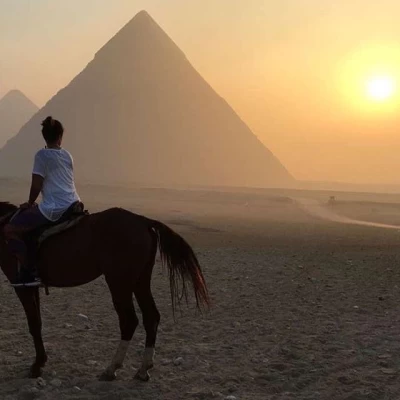
Nectanebo II, Last native Egyptian pharaoh
Last native Egyptian pharaoh
Manetho calls him Nectanebus (Africanus) and counts his reign as 18 years (Africanus) or 8 years (Eusebius de Cesarea). Nectanebo is his Greek name. According to the vast majority of specialists, he was the son of Tchahapimou. Opinions on his mother are divided, with some believing it could have been Ouedjashou (or Udjasju or Udjaschu). He seized power thanks to his father and the help of the army of King Agesilaus II of Sparta (398-360). In 351, the Persian king Artaxerxes III Okhos (358-338) attacked Nectanebo's Egypt. At the same time, a rebellion broke out in Asia Minor, supported by Thebes, which threatened to become serious. Artaxerxes III marched into Egypt and engaged Nectanebo II.
After a year of fighting the Pharaoh, a plague broke out in his army. He was forced to withdraw and postpone his Egyptian venture. The Persian king's failure inspired rebellions by some of the peoples he had subjugated, leading to a revolt in Cyprus and Phoenicia, which declared their independence. At this point, Egypt missed the opportunity to lead the rebels. Following the rebels' initial victories, Artaxerxes III decided to lead the counter-attack in person.
He raised a huge army and crushed them. Following this episode, the Persian king resumed his desire to invade Egypt. In 343/342, in a new campaign, he lined up over 330,000 men. 14,000 Greeks were supplied by the Greek cities of Asia Minor, including 4,000 commanded by Mentor of Rhodes (3,000 sent by Argos and 1,000 by Thebes), who had been fighting for Artaxerxes III and 80 triremes since 346/345 after the fall of Sidon. Diodorus Siculus (Greek historian and chronicler c.90-c.30 BC) dates the attack on Egypt to the 18th year of the reign of Artaxerxes III and Nectanebo II, in December 342.
The King attacked on three fronts, each led by a Persian and a Greek. The Greek commanders were Lacratès (or Lakrates) of Thebes, Mentor of Rhodes, and Nicostratès (or Nicostrate) of Argos, while the Persians were Rhosacès (or Rhosakes), Aristazanes and Bagoas, chief of the eunuchs. Pharaoh Nectanebo II obtained help from Cyprus and Phoenicia and faced the Persians with an army, which according to Diodorus Siculus, numbered 100,000 men, 20,000 of whom were Greek mercenaries and 20,000 Libyans. He occupied various branches of the Nile with ships.
The character of the country, with its many canals and fortified towns, enabled him to achieve his first success, repelling the Persian armies. Artaxerxes III did not admit defeat, and his new offensives were about to get the better of the Egyptians and their allies. He took Pelusa, which protected the entrance to the Delta, and then the town of Bubastis. Nectanebo II was forced to flee to Memphis, thinking he was protected by garrisons he left in the villages.
These were mixed troops, part Greek and part Egyptian, between whom jealousies and suspicions were easily exploited by the Persian rulers. The latter quickly advanced on Memphis, which fell, and in the summer of 342 Nectanebo II had to flee the country towards Nubia, where he sought asylum with the King of Napata, Nastesen. The Persians then quietly completed the invasion and Egypt once again became a satrapy.
However, according to a document found at Edfu, Nectanebo II managed to maintain the independence of the south of the country for a further two years. The Pharaoh's flight marked the end of the last indigenous dynasty, and in 342 Artaxerxes III proclaimed himself Pharaoh and began a reign of terror. Eleven years of oppression followed, and many surviving documents indicate that temple violations and massacres were commonplace. Religion was persecuted and sacred books were stolen. Persia acquired a great deal of wealth from these plunders. Before returning home, Artaxerxes III appointed Pherendares as Satrape of Egypt. Nectanebo II may not have been the last native ruler, as a certain Khababach rose up in Upper Egypt against Persian domination, proclaiming himself King of Egypt from 337 to 335 (or 338-336).
The granite sarcophagus of Nectanebo II
The granite sarcophagus of Nectanebo II was found in Alexandria. He was probably not buried in it. It was during Napoleon's Egyptian campaign that the empty sarcophagus of Nectanebo II was discovered. The French wanted to send it to Paris, but the British intercepted the shipment in 1801. As a result, the sarcophagus is now on display at the British Museum.
We do not know the name of Nectanebo II's wife, but we do know that he had a daughter who married Ptolemy I (305-282). Joyce Anne Tyldesley attributed to him a wife named Khedebneith II (or Khedeb-Neith-Irbinet), who is thought to have been a daughter of Djedhor (or Tachos).














